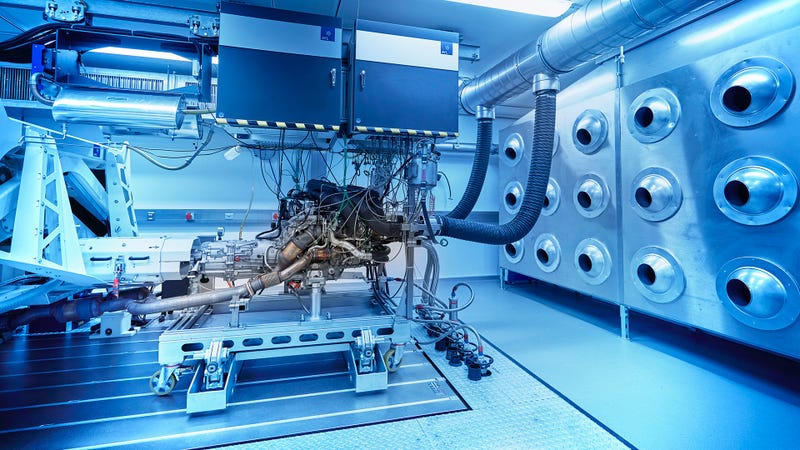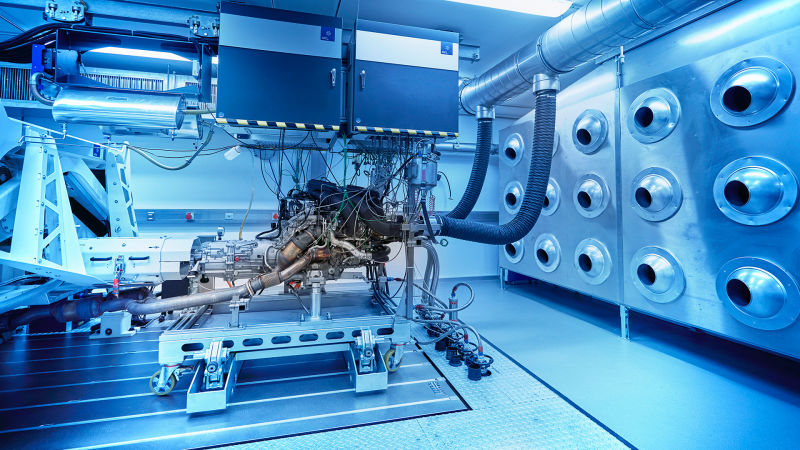
A couple weeks back we got to see the new 2020 Toyota Supra’s BMW B58 straight six engine decoded, and pointed out that while this is a high-level sports car for Toyota, it was getting a mid-level engine from BMW. Well, now here’s the high-level version of that motor—the M division’s S58, good for more than 500 horsepower bone stock.
The engine made its debut last night not in a sports car or even a sports sedan but locked away in the globular cages of the BMW X3 and X4 Ms. I’m sure this brings great ire to Supra fans already. Sweat stings their eyes as they read this. Their smart, cultured Supras are making 335 HPstock, while crude, uncultured performance SUVs are doing hard pulls out of strip mall parking lots with an M version of their engine.
In any case, let’s get into the specs of the new S58B30T0, the first new M Division straight six in half a decade, as BMWBlog points out.
If you’re curious where I’m getting these specs from, they’re straight from BMW spec sheets. The S58’s can be downloaded here, the B58’s technical training PDF can be downloaded here.
Advertisement
- 3.0 liters, but not exactly the same as the B58. The S58 has a slightly larger bore and shorter stroke (84.0/90.0) compared to the B58 (82.0/94.6). Displacement is technically down five cc, and it’s still an undersquare engine. Theoretically the new engine should have room for bigger valves, better breathing, and should be more rev-happy, but we’ll learn more in time.
- 7,200 RPM redline, up from 7,000 on the B58.
- Twin-turbo, as opposed to single on the B58. Confusingly, the B58 is a twin-scroll turbo, with two separate sets of exhaust runners independently running into one turbocharger. BMW calls this “TwinPower Turbo.” The S58 also splits the exhaust, but half the cylinders run into one single-scroll turbo and the other half into another. BMW also calls this, and I cannot stress how dumb this is, “TwinPower Turbo.”
- Compression ratio down to 9.3:1 versus the B58’s 11:1. This sounds bad to people obsessed with naturally-aspirated engines, but makes sense to those familiar with running boost.
- 473 HP and 442 lb-ft of torque in base trim.
- 503 HP in Competition trim, also with 442 lb-ft of torque.
- According to the BMW USA media site, max power is made from 5,600 to 7,300 RPM (this is, oddly, above redline) in base trim and 5,950 to 7,300 RPM in Comp trim, though it’s worth noting that the spec pages on the global media site say max power occurs at 6,250 RPM (the bump in the plots below could explain this).
- Max torque is made from 2,600 to 5,600 in the X3 M and X4 M, but 2,600 to 5,950 in the Competition models.
- Here are the torque and power curves for the X3 M and X4 M:

Advertisement
- And here are the torque and power curves for the Competition versions:

- BMW advertises a forged crankshaft on the S58, as well as Valvetronic variable valve timing and Double-VANOS variable cam timing, but the B58 also has a forged crank and Valvetronic and also Double-VANOS, as noted when the B58 won an award back in 2016.
- The S58 is a closed-deck engine, just like the B58 and also like the Toyota 2JZ. Closed-deck blocks have metal all the way around the cylinder bore rather than open cooling jackets, and are thus stronger. Tuners can read that as more boost-friendly.
- High fuel injection pressure of 350 bar (this is the same as the pressure mentioned in the BMW X5’s B58 specs), which BMW Blog notes offers better fuel distribution and efficiency.
- New oil pan with more chambers to keep good oil flow in corners.
- New intake.
- New oil cooler.
- New intercooler that’s “indirect” and doesn’t appear to be mounted right in the middle of the intake as on the B58. Confusingly, BMW also refers to the B58’s intercooler as “indirect,”(likely a reference to the fact that both intercoolers are fed liquid coolant) and it also appears that the S58’s is integrated to some degree, just not right in the middle of things.
- 3D printing technology used inside the cylinder head. BMW’s a little vague about what this exactly entails, stating in its press release that “the cylinder head has a core manufactured using 3D printing. This additive manufacturing process enables geometric forms to be created that are beyond the capability of conventional metal casting techniques. 3D printing technology has cut the weight of the new engine’s cylinder head core and allows its coolant ducts to be routed in a way that optimizes temperature management.” You can at least see what it looks like in BMW’s production video at about 16 seconds in:
All of this is to say that BMW was able to turn the B58 into a higher-revving, 503-HP version of itself. We know it’s going into the X3 and X4 Ms, as well as the next M3 and M4, per BMWBlog.
Advertisement
I guess it’s an open question if it would go into the Z4, or Supra for that matter. BMW has already tried to cool down any rumors of that happening.
But at the very least this is an interesting dream for an engine swap, or a guide on how much the B58 could be tuned by an individual. Hell, this is something that Toyota could do itself. We laud the old Supras for being able to make high horsepower numbers when tuned, but the idea of a Supra this powerful from the factory would be like nothing before.

Advertisement



Advertisement



Advertisement
















